In the growing segment of compact luxury SUVs, the Audi Q3 and Jaguar E-Pace are two standout offerings that cater to those seeking a balance of performance, comfort, and cutting-edge technology. This article delves into a detailed comparison of these two vehicles, covering their technical specs, innovations, and what sets them apart.
Audi Q3 vs Jaguar E-Pace – Which model is better for everyday use?
Two cars, one duel: Audi Q3 meets Jaguar E-Pace.
Which one wins in performance, efficiency and value for money? Find out now!
Design and Dimensions
The Audi Q3 measures 4484 mm in length, 1849 mm in width, and stands at a height of 1585 mm. It’s a quintessential Audi with a bold front grille and sharp lines, making it an eye-catching choice for luxury SUV buyers. The Q3's trunk capacity is impressive at 530 liters, offering practicality alongside its stylish demeanor.
On the other hand, the Jaguar E-Pace is slightly more compact, with a length of 4395 mm, width of 1984 mm, and a height of 1648 mm. Its aggressive stance and sleek silhouette are quintessentially Jaguar. The E-Pace boasts a trunk capacity of 494 liters, which, while slightly smaller than the Q3, still provides ample storage for everyday needs.
Engine Options and Performance
The Audi Q3 provides a variety of engine options, including both petrol and diesel engines, with power outputs ranging from 150 HP to 245 HP. The 2.0-liter petrol engine variant can sprint from 0-100 km/h in just 5.8 seconds, showcasing its sporty prowess. The Q3 also features both front-wheel drive and all-wheel drive configurations, catering to different driving preferences.
In comparison, the Jaguar E-Pace offers a more hybrid-focused lineup with options including plug-in hybrid, diesel MHEV, and petrol MHEV. Power outputs range from 160 HP to 269 HP, with the performance-oriented model achieving 0-100 km/h in just 7.3 seconds. The E-Pace is predominantly all-wheel drive, enhancing its capability in varied driving conditions.
Fuel Efficiency and Environmental Impact
In terms of fuel efficiency, the Audi Q3 shows consumption figures between 5.5 L/100km to 8.5 L/100km, depending on engine variant, while emitting CO2 levels ranging from 143 to 192 g/km. This efficiency makes it a suitable option for daily commutes as well as weekend getaways.
In contrast, the Jaguar E-Pace’s plug-in hybrid variant stands out with a remarkable fuel consumption of just 1.4 L/100km and CO2 emissions as low as 33 g/km. This efficiency promotes a greener footprint, particularly appealing to environmentally-conscious consumers.
Interior and Technology
Interior quality in the Audi Q3 is undeniably premium, featuring high-quality materials, a driver-focused cockpit, and the brand's latest MMI infotainment system. The Q3 integrates a digital cockpit that displays all essential driving data and navigation in high definition, ensuring a connected and modern driving experience.
Meanwhile, the Jaguar E-Pace incorporates a contemporary infotainment system with a touch-screen interface that boasts numerous connectivity options. The interior design is completed with quality finishes and a unique layout that emphasizes a sporty driving ambiance.
Safety and Innovations
Both vehicles come equipped with extensive safety features. The Audi Q3 includes advanced driver assistance systems such as adaptive cruise control, lane departure warning, and parking assist, enhancing overall driving safety and convenience.
The Jaguar E-Pace also prioritizes safety with its array of smart technologies, including emergency braking, lane keep assist, and a 360-degree camera system. This ensures a secure driving environment for both drivers and passengers.
Final Verdict
The Audi Q3 excels with its robust engine options, luxurious interior, and a strong focus on technology and performance. Its practicality and impressive fuel efficiency make it a versatile choice for families and individuals alike.
On the flip side, the Jaguar E-Pace impresses with its hybrid options, lower environmental impact, and sporty design. It caters to a different segment that values both performance and eco-friendliness.
Ultimately, the choice between the Audi Q3 and Jaguar E-Pace will depend on personal preferences regarding performance, design, and technological features. Both vehicles present compelling arguments in the compact luxury SUV landscape, making it tough to go wrong with either choice.
Here’s where it gets real: The technical differences in detail
Costs and Efficiency:
Price and efficiency are often the first things buyers look at. Here it becomes clear which model has the long-term edge – whether at the pump, the plug, or in purchase price.
Jaguar E-Pace has a to a small extent advantage in terms of price – it starts at 32400 £, while the Audi Q3 costs 38200 £. That’s a price difference of around 5828 £.
Fuel consumption also shows a difference: Jaguar E-Pace manages with 1.40 L and is therefore evident more efficient than the Audi Q3 with 1.70 L. The difference is about 0.30 L per 100 km.
As for range, the Audi Q3 performs significantly better – achieving up to 119 km, about 50 km more than the Jaguar E-Pace.
Engine and Performance:
Under the bonnet, it becomes clear which model is tuned for sportiness and which one takes the lead when you hit the accelerator.
When it comes to engine power, the Audi Q3 has a barely noticeable edge – offering 272 HP compared to 269 HP. That’s roughly 3 HP more horsepower.
In acceleration from 0 to 100 km/h, the Audi Q3 is distinct quicker – completing the sprint in 5.70 s, while the Jaguar E-Pace takes 7.30 s. That’s about 1.60 s faster.
In terms of top speed, the Audi Q3 performs a bit better – reaching 240 km/h, while the Jaguar E-Pace tops out at 211 km/h. The difference is around 29 km/h.
There’s also a difference in torque: Jaguar E-Pace pulls clearly perceptible stronger with 540 Nm compared to 400 Nm. That’s about 140 Nm difference.
Space and Everyday Use:
Whether family car or daily driver – which one offers more room, flexibility and comfort?
Both vehicles offer seating for 5 people.
In curb weight, Audi Q3 is barely noticeable lighter – 1635 kg compared to 1783 kg. The difference is around 148 kg.
In terms of boot space, the Jaguar E-Pace offers minimal more room – 494 L compared to 488 L. That’s a difference of about 6 L.
In maximum load capacity, the Audi Q3 performs slightly better – up to 1386 L, which is about 216 L more than the Jaguar E-Pace.
When it comes to payload, Jaguar E-Pace minimal takes the win – 554 kg compared to 535 kg. That’s a difference of about 19 kg.
Who wins the race?
The Audi Q3 proves to be performs better in key areas and therefore becomes our DriveDuel Champion!
Audi Q3 is the better all-rounder in this comparison.
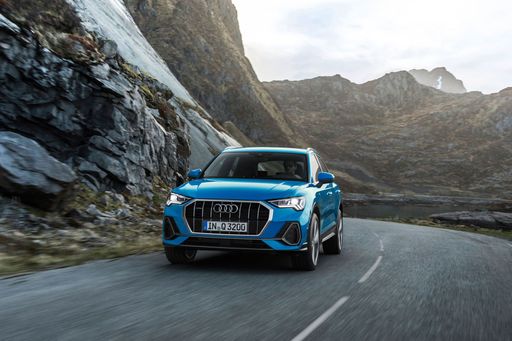 @ Audi AG
@ Audi AG
Audi Q3
Audi Q3
The Audi Q3 feels like a grown-up compact SUV with premium polish and city-friendly agility, the sort of car that makes weekend escapes and daily commutes equally satisfying. Inside, you get quality materials and smart packaging that keep things practical without skimping on style, so it’s an easy pick for buyers who want luxury without the drama.
details @ Audi AG
@ Audi AG
 @ Audi AG
@ Audi AG
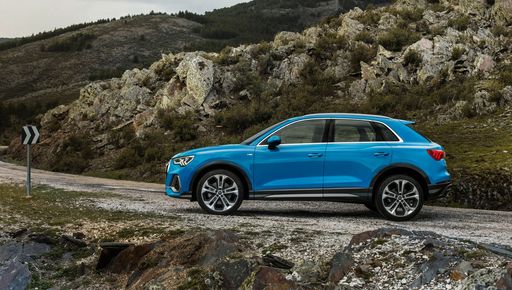 @ Audi AG
@ Audi AG
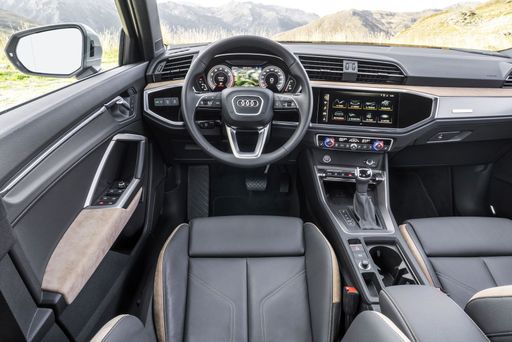 @ Audi AG
@ Audi AG
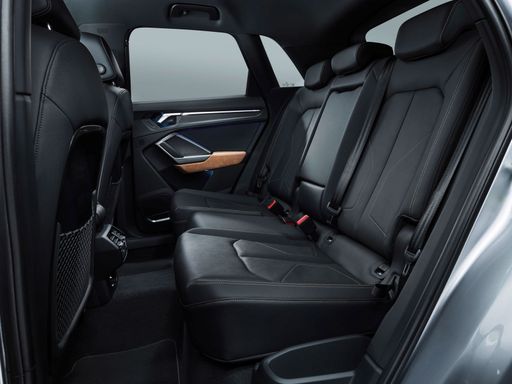 @ Audi AG
@ Audi AG
Jaguar E-Pace
The Jaguar E-Pace is a compact SUV that combines the brand's signature luxury with a dynamic driving experience. Its sleek design features graceful lines and an assertive stance, making it a standout on any road. Inside, the E-Pace boasts a meticulously crafted interior with high-quality materials and advanced technology, providing both comfort and connectivity for drivers and passengers alike.
details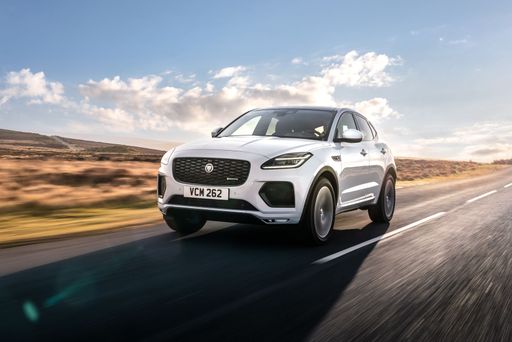 @ Jaguar Land Rover Media
@ Jaguar Land Rover Media
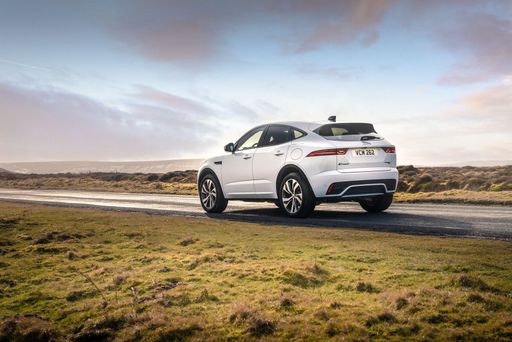 @ Jaguar Land Rover Media
@ Jaguar Land Rover Media
 @ Jaguar Land Rover Media
@ Jaguar Land Rover Media
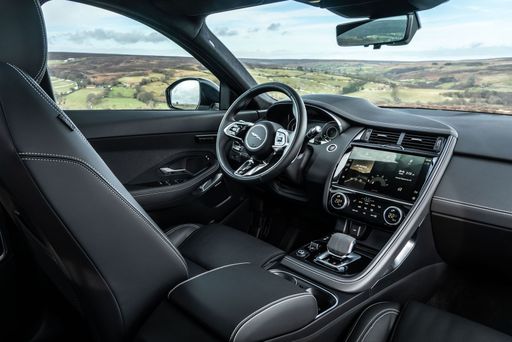 @ Jaguar Land Rover Media
@ Jaguar Land Rover Media
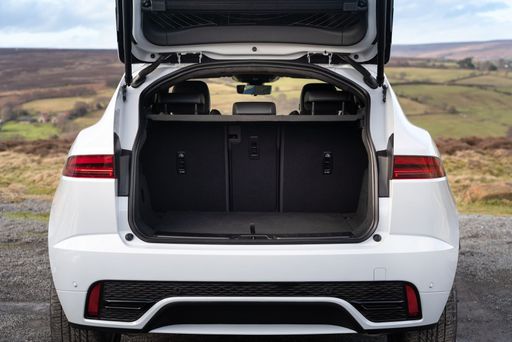 @ Jaguar Land Rover Media
@ Jaguar Land Rover Media
 @ Audi AG
@ Audi AG
|
 @ Jaguar Land Rover Media
@ Jaguar Land Rover Media
|
|
|
|
Costs and Consumption |
|
|---|---|
|
Price
38200 - 52900 £
|
Price
32400 - 56100 £
|
|
Consumption L/100km
1.7 - 8.6 L
|
Consumption L/100km
1.4 - 8.2 L
|
|
Consumption kWh/100km
-
|
Consumption kWh/100km
-
|
|
Electric Range
118 - 119 km
|
Electric Range
69 km
|
|
Battery Capacity
19.70 kWh
|
Battery Capacity
11.50 kWh
|
|
co2
39 - 195 g/km
|
co2
33 - 185 g/km
|
|
Fuel tank capacity
45 - 60 L
|
Fuel tank capacity
56 - 67 L
|
Dimensions and Body |
|
|---|---|
|
Body Type
SUV
|
Body Type
SUV
|
|
Seats
5
|
Seats
5
|
|
Doors
5
|
Doors
5
|
|
Curb weight
1635 - 1900 kg
|
Curb weight
1783 - 2173 kg
|
|
Trunk capacity
375 - 488 L
|
Trunk capacity
494 L
|
|
Length
4531 mm
|
Length
4395 mm
|
|
Width
1859 mm
|
Width
1984 mm
|
|
Height
1559 - 1601 mm
|
Height
1648 mm
|
|
Max trunk capacity
1196 - 1386 L
|
Max trunk capacity
1170 L
|
|
Payload
505 - 535 kg
|
Payload
497 - 554 kg
|
Engine and Performance |
|
|---|---|
|
Engine Type
Petrol MHEV, Petrol, Plugin Hybrid, Diesel
|
Engine Type
Plugin Hybrid, Diesel MHEV, Petrol MHEV
|
|
Transmission
Automatic
|
Transmission
Automatic
|
|
Transmission Detail
Dual-Clutch Automatic
|
Transmission Detail
Automatic Gearbox
|
|
Drive Type
Front-Wheel Drive, All-Wheel Drive
|
Drive Type
All-Wheel Drive, Front-Wheel Drive
|
|
Power HP
150 - 272 HP
|
Power HP
160 - 269 HP
|
|
Acceleration 0-100km/h
5.7 - 9.2 s
|
Acceleration 0-100km/h
7.3 - 10.5 s
|
|
Max Speed
208 - 240 km/h
|
Max Speed
190 - 211 km/h
|
|
Torque
250 - 400 Nm
|
Torque
260 - 540 Nm
|
|
Number of Cylinders
4
|
Number of Cylinders
3 - 4
|
|
Power kW
110 - 200 kW
|
Power kW
118 - 198 kW
|
|
Engine capacity
1498 - 1984 cm3
|
Engine capacity
1498 - 1998 cm3
|
General |
|
|---|---|
|
Model Year
2025
|
Model Year
2024
|
|
CO2 Efficiency Class
E, G, B
|
CO2 Efficiency Class
B, G
|
|
Brand
Audi
|
Brand
Jaguar
|
Is the Audi Q3 offered with different drivetrains?
The Audi Q3 is available as Front-Wheel Drive or All-Wheel Drive.
The prices and data displayed are estimates based on German list prices and may vary by country. This information is not legally binding.
